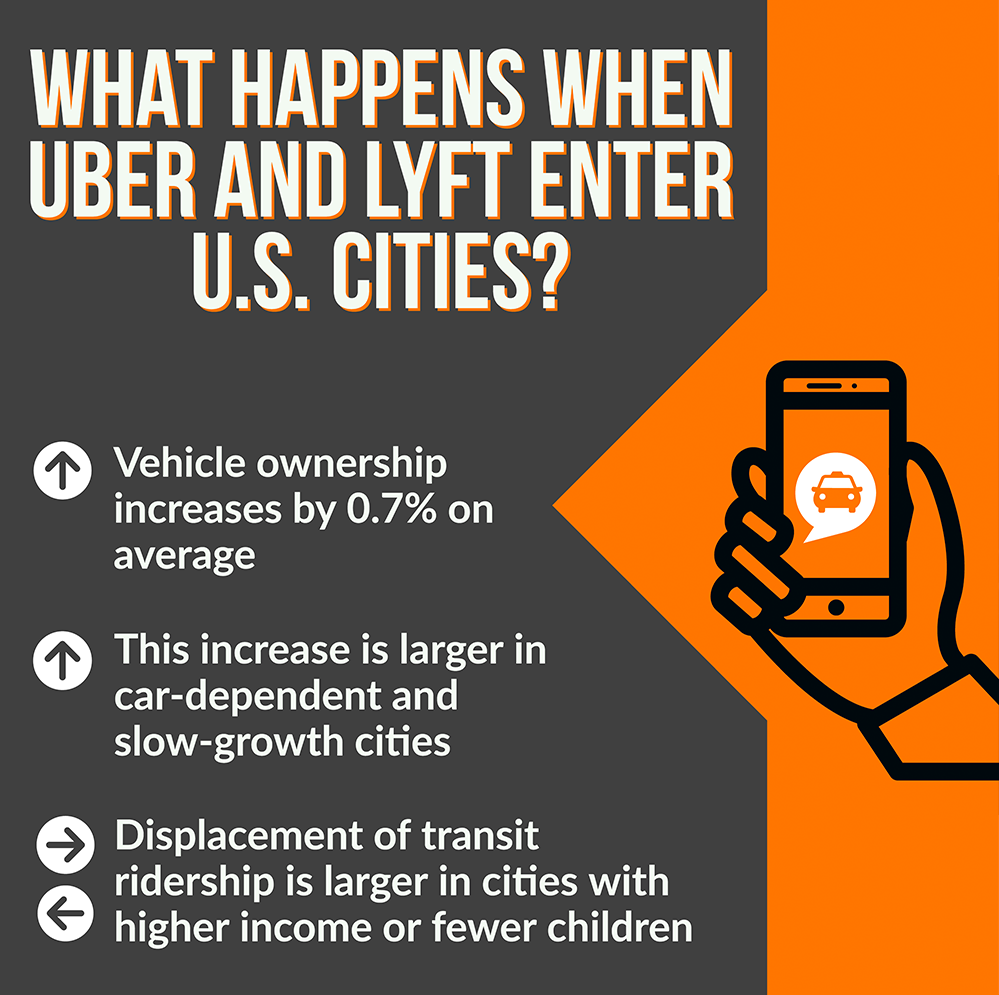Uber and Lyft increase average vehicle ownership in urban areas
On average, transportation network company entry into an urban area increases per-capita vehicle registrations by 0.7%, compared to what they would have been otherwise.
The landscape of individual transportation has changed drastically since the rise of rideshare apps like Uber and Lyft. Where before, getting from A to B required you to either take public transportation, locate a taxi, or own your own private vehicle, being able to call yourself a ride with the push of a button has made going through life without owning a car much more feasible—and in some cases, even desirable.
In a recent study published in iScience a team of Carnegie Mellon University researchers led by Jeremy Michalek have set out to quantify effects these transportation network companies (TNCs) have had on urban transportation.

Source: Carnegie Mellon University
“When we set out to quantify these effects, there were many feasible possibilities for the outcome,” says Michalek, professor of engineering and public policy and mechanical engineering. “For instance, it is possible that when travelers gain access to Uber or Lyft, some of them may choose to own fewer vehicles because they have an alternative way to get around. But on the other hand, it’s also true that some drivers could purchase extra vehicles for ride-hailing work, which could increase vehicle ownership. It wasn’t immediately clear what the net effect would be.”
The same could be said of Uber and Lyft’s effect on transit ridership. TNCs can displace transit ridership by offering a mode that is often faster, more convenient, and point-to-point. But they can also complement transit by enabling people who live or work a little too far from transit stops to get to or from those stops.
To find out, the researchers leveraged the fact that Uber and Lyft entered several hundred urban areas in different years to statistically isolate changes caused by Uber and Lyft. They have found that, on average, TNC entry into an urban area increases per-capita vehicle registrations by 0.7% compared to what they would have been without TNC entry.
“This increase in vehicle ownership is largest in car-dependent and slow growth cities,” say the researchers. “A potential explanation is that in car-dependent cities, riders use Uber and Lyft for particular services, like replacing the need for a designated driver in a group outing. But these travelers still keep their personal vehicles for ordinary travel. So, vehicle adoption by Uber and Lyft drivers could outweigh the effect of riders getting rid of their personal vehicles.”
The team also studied changes in transit ridership trends after TNCs enter urban areas. While there is less data on transit ridership, making it difficult to tell with statistical significance whether the average effect of TNCs on transit is an increase, decrease, or no effect, the team did find that TNCs induce larger drops in transit ridership in cities with higher income and fewer children.
“This makes sense to me,” says Michalek, “because I would expect travelers without car seats or family logistics and with more disposable income to be more willing to switch to a more convenient, more expensive travel mode.”
Not only could these changes in vehicle ownership and transit ridership have significant implications for traffic patterns, they could also have an impact on the environment.
“It certainly raises questions. More cars and less transit could be a real problem for trying to address our climate crisis,” says Michalek. “Transportation is the largest source of greenhouse gas emissions in the United States. But owning more vehicles doesn’t necessarily mean people are driving them more. We are working on estimating the environmental and traffic implications of the shift toward TNCs, and we’ll have more to say about that later this year.”More cars and less transit could be a real problem for trying to address our climate crisis.
Jeremy Michalek, Professor, Mechanical Engineering and Engineering and Public Policy
